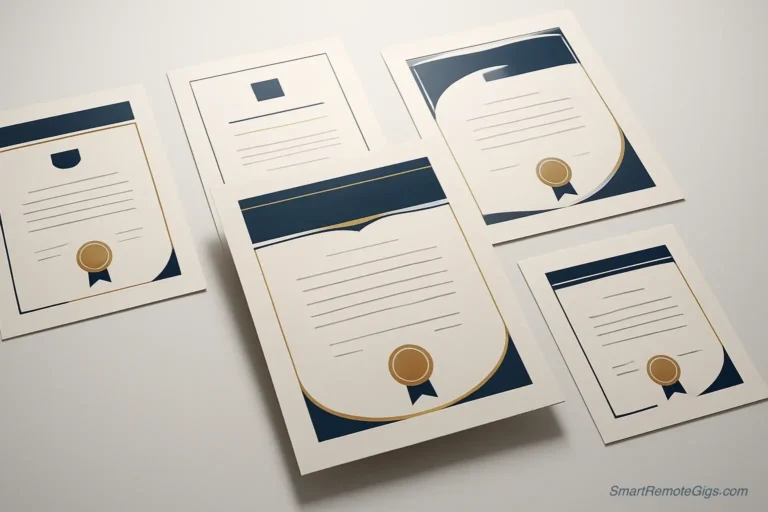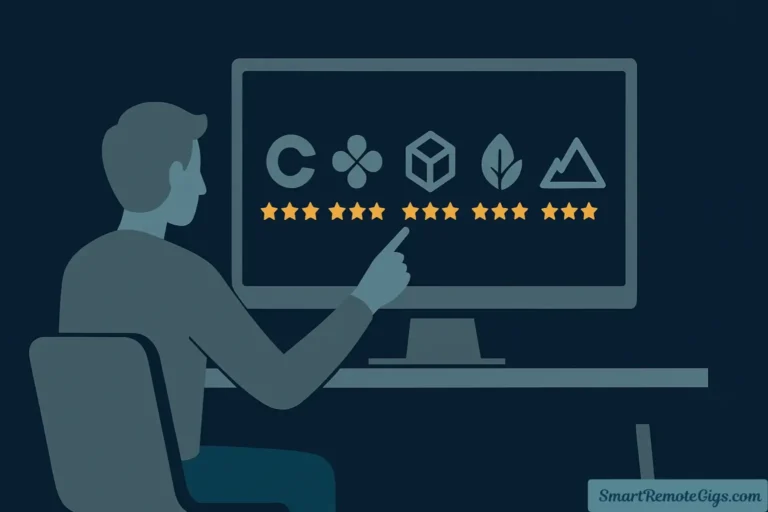The remote project management field is experiencing unprecedented growth, with companies worldwide seeking talented PMs who can lead teams from anywhere. Yet for many aspiring project managers, the path forward feels unclear. Where do you start? What qualifications do you actually need? How do you compete with experienced candidates when you’re just breaking in?
This guide eliminates the guesswork. Whether you’re transitioning from another career, fresh out of school, or simply ready to embrace remote work, you’ll find everything you need to become a remote project manager in 2025. We’ve distilled the process into five actionable steps that will take you from overwhelmed job seeker to confident candidate.
In This Guide, You’ll Learn:
- The essential hard and soft skills that separate good PMs from great remote PMs
- A proven 5-step roadmap from complete beginner to hired
- How to craft applications that beat automated screening systems
- Realistic salary expectations and long-term career advancement paths
- Where to find legitimate remote-first opportunities
The Remote PM Landscape: Why This is a Smart Career Move
Remote work has fundamentally transformed the professional landscape. According to Upwork research, 22% of the American workforce—approximately 36.2 million people—will be working remotely by 2025, representing a massive shift in how companies structure their operations. This isn’t a temporary trend—research from McKinsey indicates that 20 to 25 percent of workforces in advanced economies could work from home three to five days a week, four to five times more remote work than before the pandemic.
Project management is uniquely suited for remote environments because the role already centers on digital communication, cross-functional collaboration, and measurable outcomes. As a remote project manager, you’ll coordinate deliverables, manage timelines, and facilitate team alignment—all activities that translate seamlessly to virtual settings. The demand for skilled remote PMs continues to outpace supply, creating exceptional opportunities for those who position themselves strategically.
Before diving into the steps to get hired, it’s important to understand the reality of the role. To see what the daily mix of meetings, deep work, and team coordination actually looks like, explore our detailed guide on a typical day for a project manager.
The Core Skillset: What Separates a Good PM from a Great Remote PM
Success in remote project manager jobs for beginners requires mastering both traditional PM competencies and remote-specific capabilities. Let’s break down exactly what hiring managers are seeking.
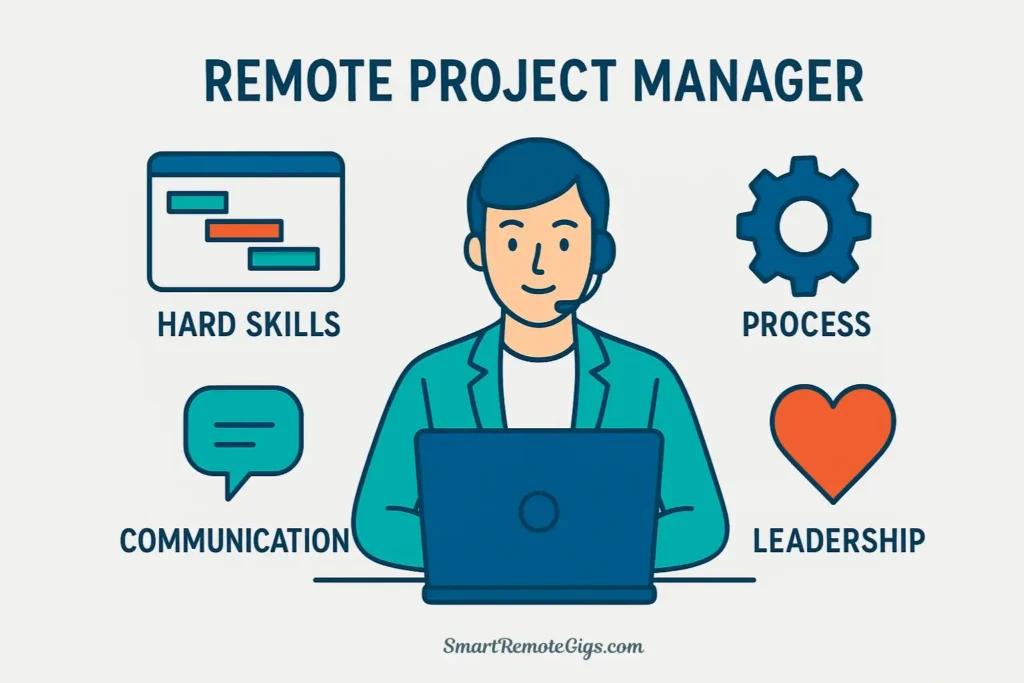
Essential Hard Skills & Tools
Modern project managers must demonstrate proficiency in established methodologies and digital platforms. Agile, Scrum, and Kanban frameworks form the foundation of most contemporary PM approaches, with Agile being particularly prevalent in tech and software development environments. Understanding sprint planning, backlog refinement, and retrospective facilitation will set you apart immediately.
Equally important is comfort with project management software. Tools like Jira, Asana, Trello, Monday.com, and ClickUp are standard across industries. Familiarity with communication platforms—Slack, Microsoft Teams, Zoom—is non-negotiable. Document collaboration through Google Workspace or Microsoft 365 rounds out the technical toolkit every remote PM needs.
While familiarity with several platforms is useful, understanding the strategic differences between Asana and Jira for your resume can significantly impact your job search.
The “Remote-First” Soft Skills (These are critical!)
Here’s what most career guides miss: technical skills will get you the interview, but remote-specific soft skills will get you the offer. The ability to lead effectively in a distributed environment requires a fundamentally different approach than traditional office management.
Asynchronous communication mastery tops the list. When your team spans multiple time zones, you can’t rely on instant responses or impromptu desk visits. Great remote PMs craft clear, comprehensive written communications that anticipate questions and eliminate ambiguity. They document decisions thoroughly and create single sources of truth that team members can reference independently.
This skill is so fundamental that we’ve created a dedicated guide with the exact frameworks, tools, and strategies for mastering async and managing teams across time zones.
Proactive stakeholder management becomes even more critical remotely. Without hallway conversations or lunch meetings, you must deliberately create touchpoints, provide visibility into project progress, and surface issues before they become crises. This means over-communicating status updates, being transparent about risks, and building trust through consistent follow-through.
Digital leadership and team motivation require intentional effort when you can’t leverage physical presence. Remote PMs who excel build genuine connections through video calls, celebrate wins publicly, and create psychological safety in virtual spaces. They recognize that team morale doesn’t happen accidentally—it requires thoughtful cultivation through recognition, one-on-ones, and inclusive practices.
Your 5-Step Roadmap to Getting Hired
Getting your first entry-level remote project manager job follows a predictable sequence. Master these five steps in order, and you’ll dramatically increase your chances of success.
Step 1: Build Your Foundation with Certifications
Certifications serve as your credibility signal when you lack extensive experience. They demonstrate commitment, validate your knowledge of industry standards, and help your resume pass initial screening filters. Leading credentials like the PMP and CAPM from the Project Management Institute (PMI) are universally recognized and respected across industries. For roles in technology and software development, Agile certifications like the Certified ScrumMaster (CSM) or PMI Agile Certified Practitioner (PMI-ACP) add significant value by demonstrating your expertise in modern development frameworks.
The right certification depends on your background, timeline, and target roles. Some require experience prerequisites, while others are accessible to complete beginners. Understanding which credential matches your situation—and how to leverage it effectively—can dramatically accelerate your job search.
For a detailed breakdown of which certification matches your situation, read our guide to the Top 5 PM Certifications to Get You Hired.
Step 2: Craft a Resume That Beats the Bots
Here’s an uncomfortable truth: before any human sees your resume, it must pass through Applicant Tracking Systems (ATS)—software that scans for keywords, formatting, and relevant qualifications. Roughly 75% of resumes never reach human eyes because they fail this automated screening.
Your resume must speak two languages simultaneously: machine-readable keywords for the ATS and compelling achievements for the hiring manager. This means strategically incorporating relevant terms, quantifying your impact with specific metrics, and using formatting that both systems and humans can parse easily.
Even if you’re pursuing remote PM jobs with no experience, you likely have transferable skills from previous roles. The key is to reframe past accomplishments using the language of project management and quantify your impact. This ensures your resume speaks to both automated systems and human recruiters, positioning you as a qualified candidate regardless of your title history.
Use our ATS-Optimized Remote PM Resume Template to ensure your application makes it past the bots and into the hands of decision-makers.
Step 3: Write a Cover Letter That Demands an Interview
While some job seekers skip cover letters entirely, this represents a massive missed opportunity—especially for remote positions where communication skills are paramount. Your cover letter is your first demonstration of how you communicate professionally in writing, a skill you’ll use daily as a remote project manager.
Generic cover letters that simply rehash your resume do more harm than good. Instead, successful cover letters follow a proven formula: they open with a compelling hook that demonstrates genuine interest in the specific company, they connect your unique background to the role’s requirements, and they close with a clear call to action.
The middle section should address the elephant in the room if you’re switching careers or lack traditional PM experience. Frame your background as an asset—perhaps your experience in customer service taught you stakeholder management, or your time in operations gave you process optimization skills. Always orient the narrative around what you bring to the table, not what you lack.
We break down the exact structure and provide templates in our guide on The Perfect PM Cover Letter Formula.
Step 4: Find the Right Opportunities (and the Right Companies)
Not all “remote” jobs are created equal. Some companies are “remote-friendly,” meaning they allow it but maintain office-centric cultures. Others are “remote-first” or “fully-remote,” building their entire operations around distributed teams. For your first remote PM role, targeting truly remote-first companies significantly improves your experience and success.
Remote-first organizations have refined their processes, communication norms, and collaboration tools specifically for distributed work. They won’t expect you to figure out remote work on your own—they’ve already solved those challenges systematically.
Popular job boards like LinkedIn, Indeed, and Glassdoor all offer remote filters, but specialized platforms like We Work Remotely, Remote.co, and FlexJobs curate higher-quality remote opportunities. That said, the most effective remote project manager career path often begins with networking rather than applications. Join PM communities on Slack, participate in virtual meetups, and connect with remote PMs on LinkedIn. Many positions are filled through referrals before they’re ever posted publicly.
See our curated list of 20 Fully-Remote Companies Actively Hiring PMs to focus your search on organizations that truly understand remote work.
Step 5: Ace the Remote-Specific Interview Questions
Remote interviews emphasize different competencies than traditional interviews. While you’ll certainly face standard PM questions about handling difficult stakeholders or managing competing priorities, expect significant focus on your remote work capabilities.
Interviewers want to know: How do you stay productive without direct oversight? How do you build relationships with team members you’ve never met in person? How do you handle communication across time zones? How do you maintain visibility into project progress when you can’t simply walk over to someone’s desk?
Prepare specific examples that demonstrate self-motivation, proactive communication, and comfort with digital collaboration tools. If you haven’t worked remotely before, draw from situations that required independent work, virtual coordination, or written communication. The STAR method (Situation, Task, Action, Result) provides a proven framework for structuring your responses with concrete details and measurable outcomes.
Many companies also include practical assessments—you might be asked to create a project plan, analyze a case study, or present your approach to a hypothetical scenario. These exercises reveal how you think, organize information, and communicate ideas more effectively than any interview question.
Prepare thoroughly with our list of the Top 15 Remote PM Interview Questions and Answers, including sample responses you can adapt to your background.
What to Expect: A Realistic Look at Salary and Career Growth
Understanding compensation helps you set appropriate expectations and negotiate effectively. Remote project manager salaries vary based on experience level, industry, company size, and geographic location (some companies adjust salaries based on where you live, while others offer location-independent pay).
| Experience Level | Average Salary Range | Typical Responsibilities |
|---|---|---|
| Entry-Level Remote PM | $55,000 – $75,000 | Assist senior PMs, manage smaller projects, coordinate team activities, maintain documentation |
| Mid-Level Remote PM | $75,000 – $105,000 | Own end-to-end project delivery, manage budgets, lead cross-functional teams, report to executives |
| Senior Remote PM | $105,000 – $145,000+ | Drive strategic initiatives, mentor junior PMs, manage complex programs, influence organizational direction |
(Note: Salary ranges are national averages as of 2024 and can vary based on location, industry, and specific company policies.)
The skills for a remote project manager compound over time, opening doors to expanded responsibilities and compensation. A typical career progression moves from Project Manager to Senior Project Manager, then branches into either deeper specialization (Technical PM, Product Manager) or broader leadership (Program Manager, Director of Project Management, VP of Operations).
Remote work also enables portfolio careers that weren’t previously possible. Some experienced PMs work fractionally for multiple companies, while others combine full-time roles with consulting or coaching. The flexibility inherent in remote project management creates opportunities limited only by your ambition and business acumen.
Conclusion: Your Action Plan Starts Now
Landing your first remote project manager position is entirely achievable with the right approach. Here’s your roadmap distilled into actionable next steps:
- Build credibility through certifications – Start with CAPM or CSM to establish your foundation
- Create an ATS-optimized resume – Use keywords naturally and quantify your achievements
- Write targeted cover letters – Demonstrate communication skills while connecting your background to each role
- Focus on remote-first companies – Target organizations that have mastered distributed work
- Prepare for remote-specific interviews – Practice answering questions about self-management and virtual collaboration
The demand for skilled remote project managers isn’t slowing down—if anything, it’s accelerating as more companies embrace distributed work permanently. The question isn’t whether these opportunities exist. The question is whether you’ll take the first step today.
Choose one action from this guide and complete it this week. Whether that’s researching certifications, updating your resume, or joining a PM community, forward momentum creates results. Your remote project management career is waiting. It’s time to claim it.
A step-by-step guide for aspiring project managers to secure their first fully remote position, covering everything from building foundational skills and crafting application materials to acing the remote-specific interview.
Total Time: 90 days
Build Your Foundation with Certifications

Research and select an industry-recognized project management certification (like CAPM or CSM) to validate your knowledge. Complete the required training and pass the exam to earn a credential that will help your resume pass initial screening by Applicant Tracking Systems (ATS).
Craft a Resume That Beats the Bots
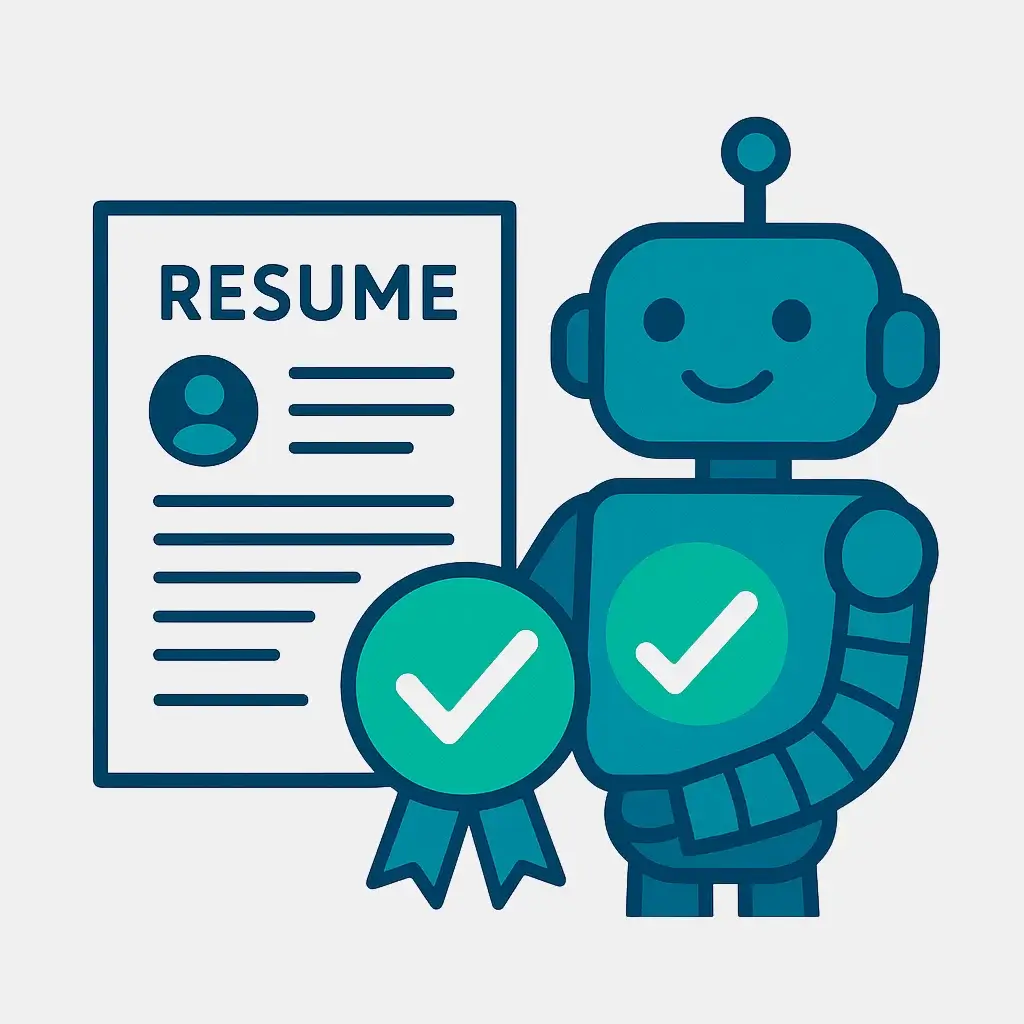
Create a resume using a simple, single-column, ATS-friendly template. Tailor your resume for each job application by incorporating keywords from the job description. Focus on quantifying your achievements and reframing past experience to highlight transferable project management skills.
Write a Cover Letter That Demands an Interview

Follow a proven three-paragraph formula (Hook, Pitch, Close). Research each company thoroughly and customize your letter to demonstrate genuine interest. Connect your specific skills to the company’s stated needs and pain points, and end with a confident call to action.
Find the Right Opportunities (and the Right Companies)
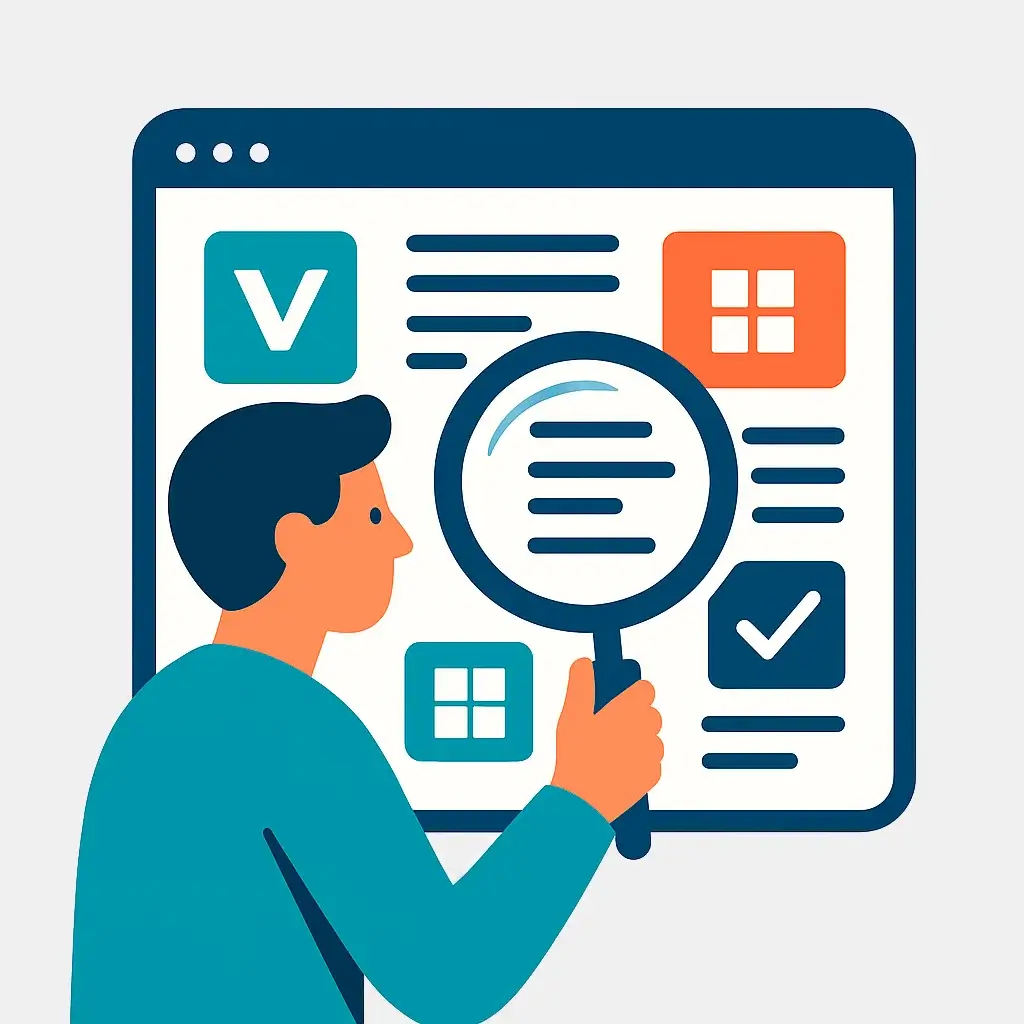
Focus your job search on remote-first companies that have a proven culture of supporting distributed teams. Use specialized remote job boards and professional networks like LinkedIn to find opportunities and connect with current employees for referrals.
Ace the Remote-Specific Interview Questions

Prepare to answer questions about asynchronous communication, self-management, and remote collaboration. Use the STAR method (Situation, Task, Action, Result) to structure your answers with specific, quantified examples that demonstrate your remote work capabilities.
Estimated Cost: 500 USD
Tools:
- Computer with internet access
- Professional LinkedIn profile
- Resume and cover letter software (e.g., Google Docs, Microsoft Word)
- Video conferencing software (e.g., Zoom, Google Meet)
- Project management tool for practice (e.g., Asana, Trello)


